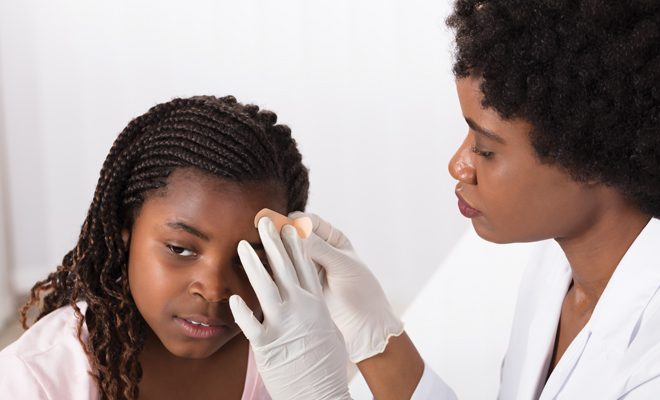
Head Games: Concussion Safety for Kids
Emma is 16 and very active in high school soccer. A varsity player since her sophomore year, Emma has had her share of injuries, but this spring, after coming in contact with another player, she left the field dizzy and disoriented. Several hours later, she was diagnosed with a concussion.
Every year, more than 300,000 sports-related traumatic concussions occur in the United States. Concussions are brain injuries that can happen to anyone, but they are especially prevalent in high school and college sports players. Concussions can also occur from everyday events such as falling, butting heads with another child or being hit with a car door.
What Is a Concussion?
Although considered non-life-threatening, a concussion is a traumatic brain injury, or TBI, usually caused by a hit, blow, bump or jolt to the head. It can also be caused by a hit to the body that makes the head and brain move quickly back and forth. If the brain suddenly bounces around or twists in the skull, the likelihood of a concussion is great as the sudden movement can create chemical changes in the brain damaging the cells.
Symptoms
Signs of a concussion generally show up soon after the head injury, but some symptoms may be subtle and not show up for a few days. Experts recommend to look out for nausea or vomiting; intense or sudden headaches; dizziness or “seeing stars.” More frightening symptoms include seizures; confusion and difficulty speaking; unusual sense of taste or difficulty swallowing; lethargy or extreme fatigue; ringing in the ears; and numbness or tingling
The 24 hours directly after a concussion are crucial, according to the CDC. Most concussions aren’t serious enough to carry lasting effects, but some will require attention and care well into the weeks following it. It’s also important to remember that the symptoms are a normal part of recovery and usually go away on their own.
Prevention
For most kids, concussions happen when they’re playing sports or during recreation, so wearing the proper protective gear is important. Equipment should fit properly and be worn correctly. During practices and games, good sportsmanship and following the rules go a long way in protecting from injury. Helmets and other head gear should be worn at all times for bicycling, skateboarding or any other activity that could involve hitting the head.
Baseline Testing
These days, usually in the preseason, student athletes are given a series of baseline tests to determine their balance and brain function. Baseline exams are usually conducted by a medical trainer or sports trainer. This testing usually is suggested for children ten years of age and older; it includes everything from learning, memory and concentration to the ability to make quick decisions or solve problems. Often baseline testing includes concussion education to coaches, parents and athletes and the proper time to return to school and sports. Results from baseline tests can be compared to a similar exam conducted by a health care professional during the season if a concussion is suspected.
Are Some Kids More Susceptible?
While a blow to the head may lead to concussions, other factors also increase the severity and likelihood of getting them. Kids with anxiety, learning disorders and a tendency to get car sickness may have an increased risk of concussions. Also, children with a lazy eye may have an increased chance of concussions.
Healing Process
Generally, concussion recovery takes seven to ten days, with proper management. However, some patients may experience post-concussion syndrome, or PCS, during which it takes much longer to recuperate. This syndrome may be worse in kids who have had previous concussions or head trauma. Girls also tend to be more susceptible to the development of PCS.
Recovering from a concussion is different for everyone and takes patience, time and attention. Most doctors will recommend limiting screen time on phones, computers or TV, limiting reading or homework, avoiding bright lights and staying hydrated. Diet is also very important after a concussion. Eating lots of protein, antioxidant-loaded foods and omega-3 fatty acids can improve both cognition and neurological function.
A child should not return to activities until she’s free from concussion symptoms. Following the doctor’s orders will keep the healing process on the right track. Since the brain needs time to heal after a concussion, taking things slowly is important. Doing too much too soon can delay recovery and keep a child from feeling better long term.
Each concussion and each child are unique, so recovery plans will vary based on the child’s symptoms and history. The good news is that most kids usually recover fully after a concussion. Scheduling a follow-up visit with the doctor can ease the mind and make a world of difference in how quickly they are back to regular activities. ■
Sources: cdc.gov, childrensmercy.org, healthline.com and mayoclinic.org.







